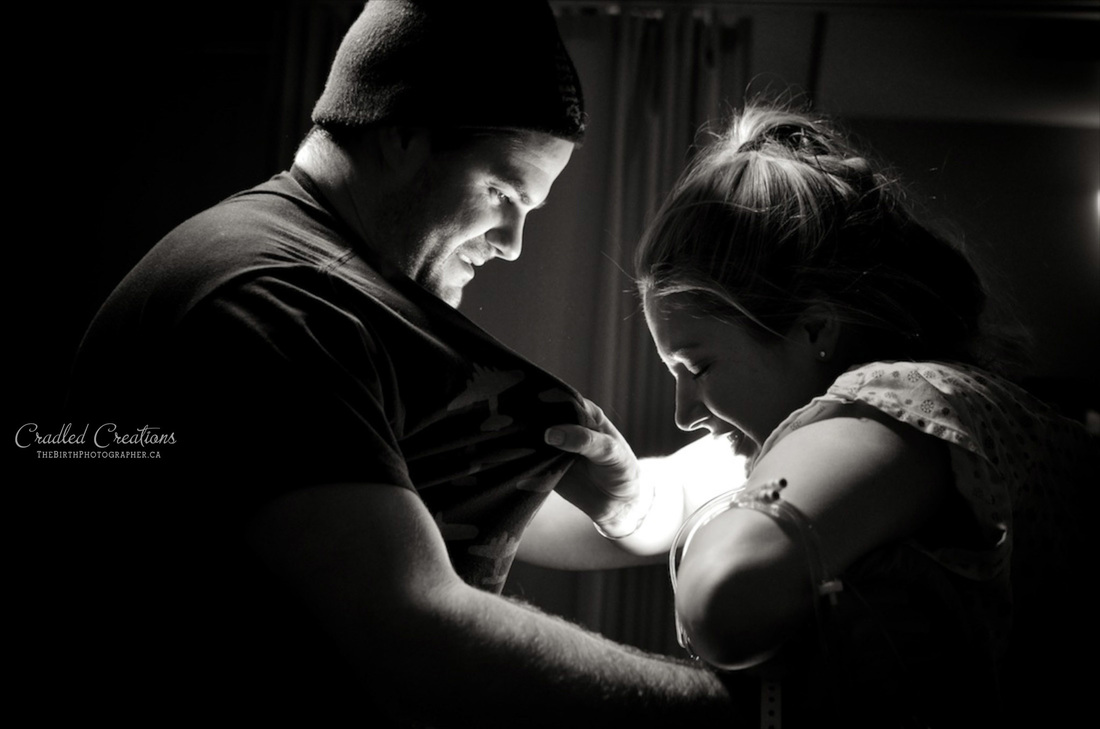|
I am so honoured to write "Tuesday's Tip" for the Birth Photography Facebook Page.
If you can predict anything about birth photography, it's that a birthing environment is unpredictable. Most births seem to happen at night, when the world is already dark and calm. Birth is a primal experience and women feel much more comfortable and relaxed when their surroundings are dark. Just think about it… you are vulnerable when you are labouring; would you feel more comfortable labouring and having your legs spread open in a bright room where everyone can see you or in a dark room where you feel safe and relaxed and alone? Often the lights in a birth room are turned off or turned low to give that labouring mama the privacy she needs to relax and release her baby. So, the million dollar photography question, "how do you shoot in low light without a flash?" There is definitely a time and a place for using flash in birth photography and you should never go to a birth without a flash in your toolkit, but I try to use it as seldom as possible. Instead, I love shooting in low light and embrace those divinely beautiful next-to-no-light scenes. Shooting without a flash in low light gives you a lovely bokeh, and I admit the photos will be softer than the crisp images you can get with flash, but they also tell the story of the birth environment so truthfully and portray the romantic drama and emotion of a birth story. First things first, the idea that "it's not the gear you have, it's how you use it," well, that idea doesn't apply to low-light photography. If you want to take brilliant birth photos in the dark, then you need top of the line gear. You absolutely must be shooting on a full frame camera with a lens that can shoot at a low aperture. If you are shooting on entry level gear, your photos WILL be blurry and littered with grain, or worst case scenario you won't even be able to focus your camera and will miss a moment all together because your camera sensor won't have enough light to find your subject. If you want to shoot births, you must have professional gear and be prepared to shoot it in next-to-no-light. Second, practice makes perfect, but don't practice with actual births. A birth happens once in a lifetime, you must know how to use your gear before advertising to photograph births. You should be able to change your settings in a moments notice so you don't miss a shot. Practice at home, at night with only a few candles lit in your bedroom. You should be able to capture crisp images with a moving subject. Third, let's talk settings. I push my camera to it's limits. When the lights go out, I crank my ISO up. I'm comfortable shooting as high as 12,800. Yes, there will be a lot of grain (which I choose to embrace) but this can also be improved in post-production when editing in Lightroom or Photoshop. I also have no problem pushing my lens to it's limits and will shoot with apertures at 1.4 if I absolutely need to. I prefer to keep my aperture around 2.8 for most scenarios, but in low light, I don't mind shooting wide open. Fourth, it's just common sense, but you must have a steady hand when you push down that shutter button. Since I stretch my shutter speeds to low levels, it's important that I have a very steady hand. I will often brace my camera with my elbows in against my body to give extra stabilization. Camera shake can easily ruin a photo when you are shooting with such delicate settings. So make sure to focus on the exact spot you are intending to (there is less forgiveness at these settings) and hold still while the shutter takes 2 shots-- the first one might be blurry, but the second one will be perfect. Here are a few low-light photos, taken in dark rooms with 1 small light source to show you some moody examples of the beauty of low-light birth photography.
16 Comments
|










